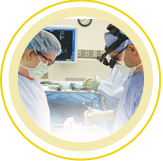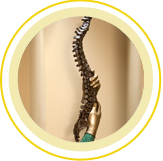Getting older is not for the faint-hearted. As time passes, we can’t see as well as we used to, we get wrinkles, our hair turns gray, and you can add your own. One other significant change is our weakened bones. It’s usually due to osteoporosis. We don’t pay attention to it until something happens. Let’s investigate osteoporosis and spinal fractures: what you should know.
When You Have Osteoporosis
As we get older our bones become less dense and become brittle. When you have osteoporosis spinal fractures are common. Almost one million occur each year in the US. It happens to older women more commonly, but men can also have osteoporosis.
Moderate osteoporosis can cause a spinal fracture from a fall or an accident. If you have severe osteoporosis, you can fracture a bone just from doing everyday things like getting out of a car, sneezing, coughing, or twisting.

Spinal fractures, or sometimes known as compression fractures, happen as our bones can no longer handle the pressure and break. These types of fractures occur twice as much as other types like the hips or wrists.
When You Have a Spinal Fracture
When the vertebrae in our spine weaken, they can become more narrow and flatten. The result is older patients become shorter and eventually develop a rounded back, sometimes known as dowager’s hump.
This increases the risk you may develop a spinal fracture or compression. Back pain may be the first sign you have a compression fracture, and it is usually located near the break. They seem to occur just above or at the waist or lower back. If the fracture is severe enough, it can affect the legs and cause nerve pain downward.
Severe back pain can make it hard to stand, sit, walk, or lift anything.
Getting a Diagnosis and Treatment Options
Spine & Scoliosis Specialists will order x-rays and imaging tests like a CT scan or MRI to determine if you are suffering from a spinal compression fracture. A bone density test may also be ordered to diagnose osteoporosis.
There are several non-surgical treatment options for spinal compression including over-the-counter medications and rest, plus wearing a brace to prevent movement allowing the bone to heal. Physical therapy may be recommended.
For severe pain that is not improved, there are surgical treatments including the following:
Kyphoplasty
This surgery involves inserting a needle into the vertebrae and then inserts and inflates a balloon within the vertebrae to restore the correct height and shape. A bone cement then fills the cavity. This procedure can be performed under general or local anesthesia with the patient resuming activities rather quickly.
Vertebroplasty
Here your spine surgeon injects the bone cement right into the narrowed vertebrae. Post-op is similar to the above treatment.
Contact Spine & Scoliosis Specialists at 336.333.6306 for an evaluation in Greensboro or High Point, NC if you are having symptoms of a spinal compression fracture.



